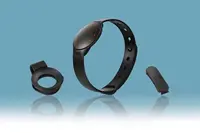 Ambiq Micro has announced that its Apollo microcontroller (MCU) has been selected by Misfit as the ‘brain’ in the Misfit Shine 2 Fitness and Sleep Monitor.
Ambiq Micro has announced that its Apollo microcontroller (MCU) has been selected by Misfit as the ‘brain’ in the Misfit Shine 2 Fitness and Sleep Monitor.
The next-generation Misfit Shine 2 is claimed to provide new features, functions and capabilities without sacrificing its six month battery life.Shine 2 tracks activity and sleep with a three-axis accelerometer and newly added three-axis magnetometer, displays progress, tells time, and gets users motivated with Misfit Move, a feature that encourages users to be active with a vibrational nudge.
"Shine 2 would not be what it is without this processor,” said Steve Diamond, VP of Hardware Engineering at Misfit. "It allowed us to focus less on power optimisation and more building a next-generation product with the same great battery life."
The Apollo MCU will operate as the central processor and controller in the new Misfit Shine 2, handling overall device operations including processing inputs from the device’s motion and environmental sensors and also controlling wireless communication with the outside world.
Ambiq Micro’s interim CEO, Mike Noonen, said: “The Ambiq Micro team is thrilled that our order of magnitude low power advantage is used so effectively in the Shine 2.”
Based on the 32-bit ARM Cortex-M4 with FPU, in real-world applications the Apollo MCU delivers typically 5 to 10 times lower energy consumption than other competitive MCUs. This high level of performance per watt can mean significantly extended battery life, the use of smaller or fewer batteries, and/or the ability to add new features not previously possible.
The reduction in energy consumption is achieved using Ambiq’s Subthreshold Power Optimised Technology platform. The Apollo MCU consumes 34µA/MHz when executing instructions from flash memory and features sleep-mode currents as low as 140nA.
Author
Tom Austin-Morgan
Source: www.newelectronics.co.uk
